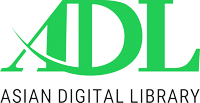Understanding how cognitive styles shape instructional strategies among english language teachers
DOI:
https://doi.org/10.71085/sss.04.03.322Keywords:
English Language Teaching, Split-Brain Theory, Cognitive Style, Public Schools, Male and Female EducatorAbstract
This paper investigates the impact of elementary school English teachers' cognitive styles—left, right, and middle brain utilization—on their teaching methodologies and interactions with students at grade 6. In the quantitative phase, eighty English teachers from public schools participated in the Cognitive Style Questionnaire. The analysis of the findings led to FGDs with sixth-grade students to further examine the effects of the teaching strategies. The study found that 45% of the teachers are middle-brained, 37.5% are moderately left-brained, and 7.5% are strongly left-brained, encompassing both male and female educators. Additionally, the research indicated that early-career teachers tend to demonstrate a higher dominance of left-brain characteristics, implying a reliance on traditional methods, as well as a structured, rule-based approach to teaching that offers limited opportunities for speaking practice, as reported. The instruction of the English language tends to undervalue creativity, intuition, and flexibility due to the predominance of left-brain-oriented teachers.
Downloads
References
Borg, S. (2015). Teacher cognition and language education: Research and practice. Bloomsbury Publishing.
Bruner, J. (1990). Acts of meaning. Harvard University Press.
Carabantes, L. (2025). Context matters: a sociocultural framework for materials development. Elt Journal, 79(2). https://doi.org/10.1093/elt/ccae047
Creswell, J. W. (2014). Research design: Qualitative, quantitative, and mixed methods approach (4th ed.). Sage Publications.
Evans, C., & Waring, M. (2011). Exploring students’ perceptions of feedback in relation to cognitive styles. Assessment & Evaluation in Higher Education, 36(3), 311–324. https://doi.org/10.1080/02602930903428762
Gardner, H. (1983). Frames of mind: The theory of multiple intelligences. Basic Books.
Krueger, R. A., & Casey, M. A. (2015). Focus groups: A practical guide for applied research (5th ed.). Sage Publications.
Littlewood, W. (2004). The task-based approach: Some questions and suggestions. Elt Journal, 58(4), 319–326. https://doi.org/10.1093/elt/58.4.319
Marzano, R. J. (2007). The art and science of teaching: A comprehensive framework for effective instruction. Ascd.
McCarthy, B. (2010). The 4MAT system: Teaching to learning styles with right/left mode techniques (3rd ed.). About Learning.
McGilchrist, I. (2009). The master and his emissary: The divided brain and the making of the Western world. Yale University Press.
Richards, J. C., & Farrell, T. S. C. (2020). Practice teaching: A reflective approach (2nd ed.). Cambridge University Press.
Sperry, R. W. (1968). Hemisphere deconnection and unity in conscious awareness. American Psychologist, 23(10), 723–733. https://doi.org/10.1037/h0026846
Tseng, C.-T. (2021). Reflective practice and teacher cognition in Efl contexts. Tesol Journal, 12(4), e00555. https://doi.org/10.1002/tesj.555
Zhang, L. F. (2017). Development of teaching styles in higher education. Instructional Science, 45(2), 255–277. https://doi.org/10.1007/s11251-016-9403-3.
Downloads
Published
Data Availability Statement
The data that support the findings of this study are available from the corresponding author upon reasonable request.


































